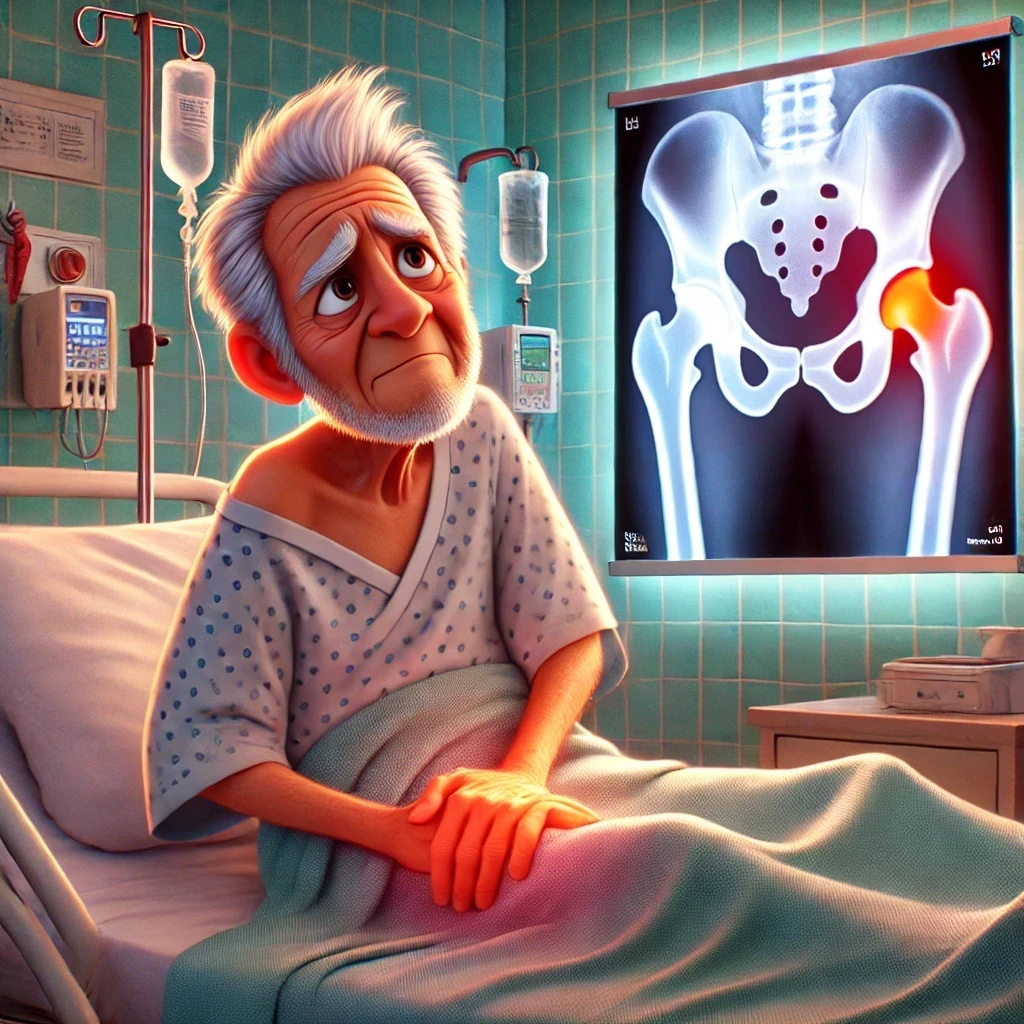Pain after surgery isn’t just a number; it’s an experience that varies dramatically from one individual to another. Our latest research, recently published in Bone, dives into this complexity, exploring how elderly patients with hip fractures experience pain during hospitalization. By uncovering distinct pain “trajectories,” we’ve opened new doors to personalized pain management—tailoring treatment to the unique needs of each patient.
Link to study: Acute pain trajectories in elderly patients with fragility hip fractures (Potnuru P, et al. Bone 2025)
Highlights
- Elderly patients with fragility hip fractures follow distinct acute pain trajectories.
- Group-based trajectory modeling was used to classify pain experiences post-fracture.
- Persistent pain trajectory linked to higher opioid use and longer hospital stays.
- Intertrochanteric fractures, higher BMI, and initial pain severity are linked to severe pain trajectories.
- Findings support tailored pain management based on patient-specific pain patterns.
Our Study
We studied 100 elderly patients hospitalized with fragility hip fractures, tracking their daily pain scores for five days post-injury. Using advanced statistical modeling, we discovered three distinct patterns of pain:
- Minimal Pain: Patients experienced low pain levels throughout their hospital stay.
- Subsiding Pain: Pain began high but quickly decreased.
- Persistent Pain: High pain levels remained constant throughout the hospitalization period.
Patients in the persistent pain group not only suffered more but required significantly more opioids and stayed longer in the hospital. Why does this matter? Because identifying who might fall into this high-risk group can guide clinicians toward proactive, individualized interventions.
How does this affect patients?
Our findings highlight specific factors—such as initial pain severity, body mass index (BMI), and fracture type—that predict a patient’s pain trajectory. For instance, higher initial pain and BMI, along with certain fracture types, notably increase the risk of persistent severe pain. Recognizing these predictors early means doctors can tailor aggressive pain relief strategies sooner to improve recovery.
This research has broader implications. Beyond just hip fractures, understanding pain trajectories could revolutionize pain management for various surgeries and injuries. Future studies could apply this trajectory-based approach to personalize interventions, enhancing patient outcomes and satisfaction.
Moreover, our results emphasize the need for clinical trials testing targeted pain relief strategies based on these identified trajectories. Imagine a future where pain management is not a one-size-fits-all approach but an individualized plan designed around a patient’s unique pain journey.
Pain relief should never be generic—it should be personal. Through insights like those generated by our study, we’re moving closer to that ideal, improving the recovery experience for patients after injury and surgery.
